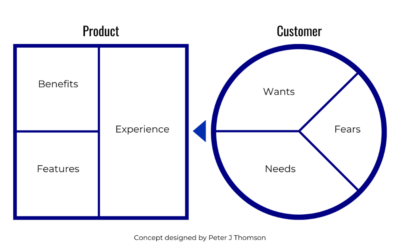In conversations with architecture firm owners, especially those in the startup phase, I often hear the following question:
How do I market my design services without a portfolio of work?
If you are lucky, you have permission from previous employers to include the work you did for them as an employee on your business website. Before you do this, ensure you have the necessary permissions and speak with a lawyer.
However, if you don’t have permission and are unlikely to get it, don’t worry. There are other ways to market your design services while you build a portfolio of work under your business.
Flipping the narrative on the importance of a portfolio
I love a reframe, and this situation is the perfect opportunity.
As architects, it is easy to obsess about our portfolio of work because we take pride in the projects we have designed. The importance of a portfolio is ingrained in us early on in our design education.
After you become more established in your practice, it will be essential to showcase your work so that you attract your ideal clients. However, why not think about your marketing differently as you start?
Instead of focusing on images of your portfolio of work, consider highlighting your story, your process, and the value you provide to your clients.
Take a step back and think about why your clients are hiring you.
They hire you for your experience, expertise, and the value you bring to the process. A process that can be long and daunting for your client.
Yes, they care about how the building looks and functions, but the value you provide as an architect is not necessarily captured in the pretty pictures of the project at the end. We are often obsessed with the photos of our design work, but clients are interested in them because they prove your experience and expertise.
There are other ways to demonstrate your experience, expertise, and value. So, why not lean into that?
Demonstrating your experience, expertise, and value without a portfolio of work
Share your story
By sharing your story on your website, social media, and directly with your clients, you demonstrate your experience and expertise. A few questions to get you started:
- Why did you start your own design firm?
- What experience do you have? What has shaped you as a design professional?
- What problems do you want to solve for your clients?
Focus on the process and an engaging user experience
Firms with a portfolio of work are not always thinking about explaining the process of working with them or creating a seamless user experience. This is an opportunity for you. Provide information for your clients about what they can expect when working with you. Questions for consideration:
- What are the different phases of a project?
- What happens during each phase of the project and how long does it last?
- What deliverables are provided and what decisions are made?
- What is it like to work with you? Why are you different?
- How do you communicate? How often will you meet? How do you manage the budget?
Warning: avoid explaining every detail. Keep it high level. Focus on explaining as much as you can with as few words as possible. Utilize visuals if it makes sense. Also, this can be great social media and blog content as well.
Utilize visuals strategically
Just because you don’t have photos of your built work yet does not mean you don’t have visuals you can use to showcase your firm. As you get started, consider sharing recent designs, sketches, and photos of what inspires you.
You could also share photos of your studio, which gives a potential client a peak behind the curtain about how you work.
Lastly, include photos of yourself. People connect with people. It can be uncomfortable, trust me, I also struggle with this one, but providing potential clients with a glimpse of who you are makes you more approachable.
Testimonials
Testimonials are a great way to provide social proof for your potential clients before and after you have a portfolio of work. For more on testimonials, check out this blog post all about testimonials.





0 Comments